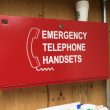700 MHz flurry encouraging for public safety
A series of announcements in the past several weeks has made many in the public-safety community cautiously optimistic that 700 MHz broadband networks for first-responder agencies could be built in the not-too-distant future — a far cry from the attitude that existed just a few months ago.
At that time — a year after the D Block auction failed to attract a qualifying bidder — the 700 MHz broadband landscape seemed to be in shambles: a proposal for a second D Block was roundly criticized by public safety and went nowhere at the FCC, major cities were outspoken in their desire to build networks on their own, and the Public Safety Spectrum Trust (PSST) had a lot of debt and no assets other than its nationwide 10 MHz license. And no one was sure when the FCC would be reconstituted, so that it could take actions on anything other than the digital TV transition.
Today, the situation has changed markedly. Major cities officials have expressed a willingness to work with the PSST, which has reciprocated by supporting the notion of metropolitan areas building out 700 MHz networks early via a waiver process. An ad-hoc public safety group with representatives from eight organizations agreed to ask Congress to allocate the D Block to public safety instead of commercial use. And three of the most influential public-safety organizations have endorsed LTE as the national technology standard for a nationwide wireless broadband network for public safety.
“We have a light at the end of the tunnel,” said mobile wireless consultant Andrew Seybold. “We finally have a first-responder industry that has finally woken up and come together.”
Other previously nagging aspects seem to be falling in place, as well. The PSST has access to $500,000 in grant funds from APCO in the short term, and the ad-hoc public-safety group expressed a desire to seek a sustainable funding source for the PSST. Meanwhile, the Senate finally got around to conducting a confirmation hearing for new FCC Chairman Julius Genachowski, so there’s some hope that a new FCC will be in place next month.
During that hearing, Genachowski said he wants public-safety personnel to have access to broadband technologies, noting that “I don’t think we can move too quickly in tackling that.”
Public safety also has the support of AT&T and Verizon, the two telecom behemoths that have advocated giving the D Block public safety. The two wireless carriers also have decided on LTE as their 4G technology to be deployed in the 700 MHz band, so there may be opportunities for public safety to work with them on the network side, as well.
Of course, the real key component in all of this is that public safety continues to present a united front, because that’s what captures the attention of everyone — federal officials, vendors and carriers.
“The announcement that public safety had gained consensus about what to do with the D Block was the first thing that we heard that helped our company get its mind on this because, up until that point, public safety was divided, and we weren’t going anywhere as long as that happened,” Stacey Black, vice president of strategic programs/marketing in AT&T Mobility’s government solutions group, said during a recent meeting of the National Public Safety Telecommunications Council (NPSTC).
It’s an important point to remember. After all, while the recent signs of broad consensus have been encouraging, there are plenty of areas where something still could go wrong — particularly as we get down into the details of governance issues and business relationships. There are bound to be items of disagreement, but it’s important that public-safety leaders maintain perspective and resolve such disputes in a manner that doesn’t disrupt the big-picture objective: securing broadband communications for first responders.

















